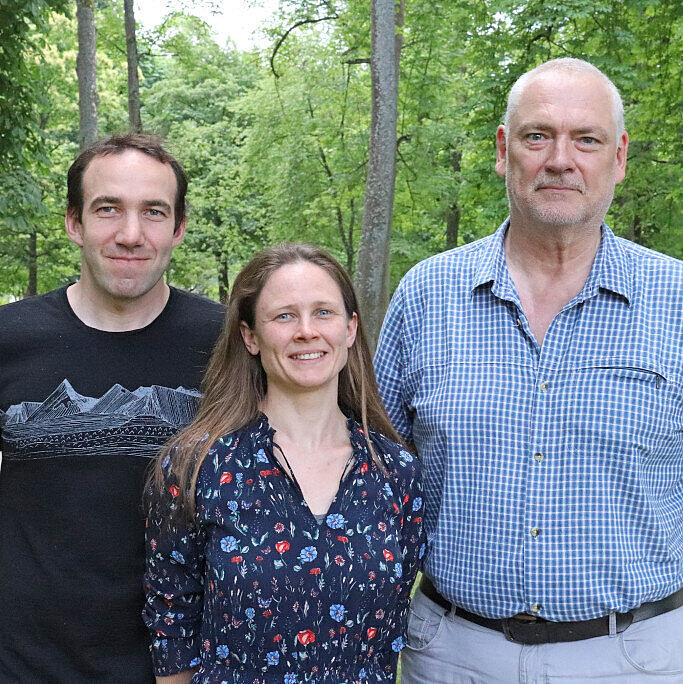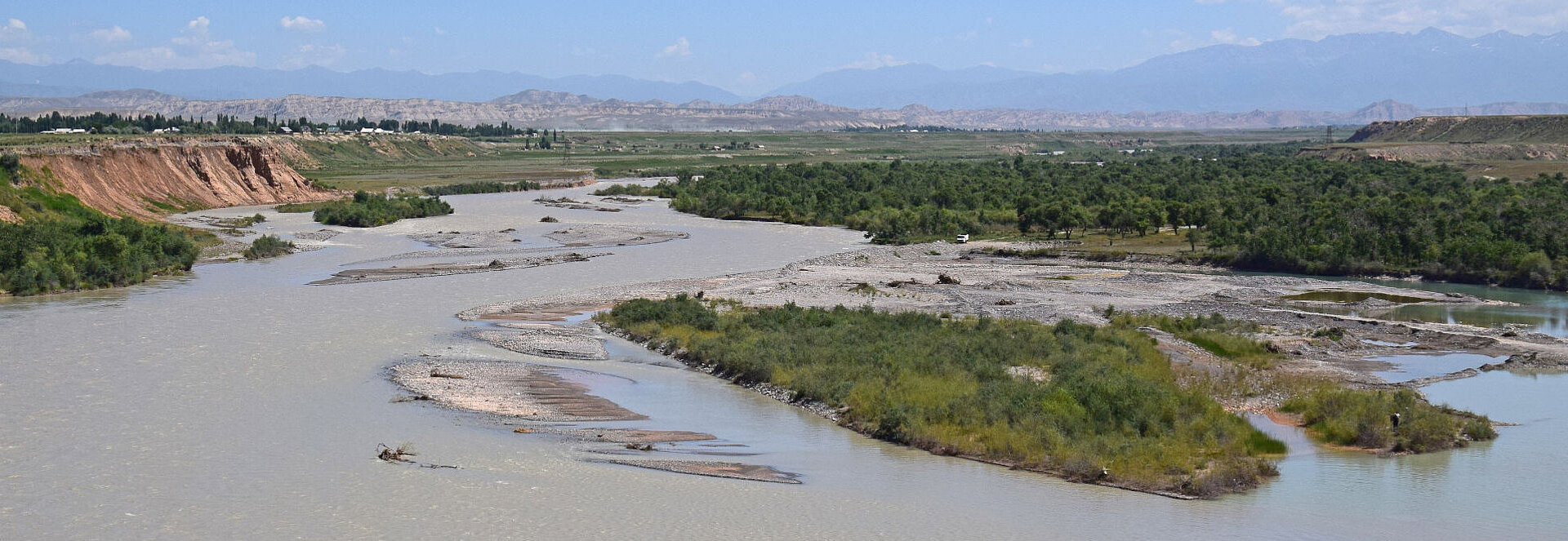Preserving the Riparian Forests of Kyrgyzstan
Although more than half of the world’s rivers have been altered by human activity and climate change, the floodplain ecosystems along the Naryn River in Kyrgyzstan remain largely untouched. In their natural state, these floodplains not only provide valuable insights into the natural dynamics of river systems that are no longer common in Central Europe. They are a hotspot for biodiversity in the region and provide ecosystems services—such as improving water quality, reducing flood risks, and carbon storage—that are essential to changing climate mitigation and adaptation strategies.
The preservation of the riparian forests and ecosystem services along the Naryn River is the aim of ÖkoFlussPlan, a new international and interdisciplinary climate-research project led by the KU Eichstätt-Ingolstadt. The project launched in August 2019 and is set to receive €860,000 in funding over the next three years from the German Federal Ministry of Education and Research. ÖkoFlussPlan expands on experience the KU gathered in an earlier project funded by the Volkswagen Foundation from 2014 to 2017, which focused on strategies for the sustainable use and preservation of floodplains in Kyrgyzstan and China.


The new project is headed by Prof. Dr. Bernd Cyffka—professor of applied physical geography at the KU Eichstätt-Ingolstadt and the head of the Neuburg-based KU Floodplain Institute—and involves a total of 14 partner institutions from Germany and Kyrgyzstan. German project partners include the Technische Hochschule Ingolstadt, the Technical University of Munich, and the Eberswalde University for Sustainable Development. In Kyrgyzstan, municipalities, authorities, and NGOs are working alongside the Naryn State University and Kyrgyz State University for Construction, Transport and Architecture.
At the Intersection of Conservation and Development
The central focus of the ÖkoFlussPlan project is the nexus of conservation, resource use, and energy development in the region. For people living along the Naryn River, the floodplains are an important source of firewood, and the land is used for grazing. Additionally, the floodplains provide recreational areas and protect against erosion. However, the chopping of firewood and the cultivation of pastures have placed a strain on the floodplains, putting their future at risk. Beyond this, plans for a new barrage cascade in the upper course of the river threaten to disrupt the natural dynamics of the riverine system and its biodiversity.
“Local decision makers are now confronted with a serious conflict: how can they preserve the natural ecosystem and its biodiversity, while at the same time supporting hydropower development in the region and also ensuring that the local population has adequate access to resources?” says Cyffka.
Participating Institutions in the ÖkoFlussPlan Project
From Germany
- Catholic University of Eichstätt-Ingolstadt (Applied Physical Geography/Floodplain Institute Neuburg)
- Technische Hochschule Ingolstadt (Institute of new Energy Systems)
- Technical University of Munich (Chair of Hydrology and River Basin Management)
- Eberswalde University for Sustainable Development (Socioeconomics & Communication)
- ÖKON Gesellschaft für Landschaftsökologie, Gewässerbiologie und Umweltplanung mbH, Kalmünz
- CitrinSolar GmbH Energie- und Umwelttechnik, Moosburg
- Water Resources Authority Ingolstadt
- scilands GmbH – Gesellschaft zur Bearbeitung digitaler Landschaften, Göttingen
From Kyrgyzstan
- Eco-Consult
- Naryn State University
- Kyrgyz State University for Construction, Transport and Architecture
- World Agroforestry Centre, branch office Bishkek
- Agency for municipal development and investments
- Forest administrations Naryn and Aktalaa
- Municipalities Aktal and Emgek-Talaa
- Kyrgyz Soil Science Society
Promoting Mitigation Measures
Part of the solution lies in reducing the pressure of resource usage. The researchers are working to develop sustainable alternatives for timber extraction in the area: establishing fast-growing wood plantations, they say, could replace the floodplains as a source of wood. They also plan to use modern technology, for example a mobile installation for generating solar electricity and heat by using solar power. They seek to establish these technologies as an alternative to deforestation of the local riparian forests.
Scientists, Citizens, Government: A Partnership
To address this multifaceted issue, it will be just as important to collaborate with Kyrgyz decision makers from different fields, as well as with the local population. To support their research, the team of German and Kyrgyz scientists will take into account existing regional projects initiated by Kyrgyz authorities, which promote the protection of floodplains and the efficient use of energy in the villages. The team also intends to maintain a close dialogue with the local population. This will not only enable them to draw on locals’ existing regional knowledge—in turn, the local population will be more involved in the project and its outcomes.


PhDs and Postdocs Driving Conservation Research
ÖkoFlussPlan is a transdisciplinary project with a sustainable perspective and offers room for practical implementation of theoretical knowledge to obtain new findings. In line with the guiding principle “Today’s students are tomorrow’s leaders,” young researchers such as master’s students and doctoral candidates play a central role in this context. Close collaboration will be maintained between Germany and Kyrgyzstan to allow young researchers from both countries to work together to address research questions on riparian forests, and to explore modern European methods and perspectives. An additional summer school program for master’s and doctoral students is currently being planned.
The KU scientists will focus on analyzing natural floodplain ecosystems. A team of young researchers will use modern methods of environmental analysis, including field recordings, remote sensing, and geoinformatics, to promote long-term monitoring of floodplain development along the Naryn. Gathering information over this large territory will allow them to draw conclusions on the state of the floodplains and to make predictions on possible future developments.
Strengthening Research through International Exchange
Through Ökofluss, the KU continues to strengthen its focus on capacity building through international exchange. In November 2019, Dr. Nadira Degembaeva spent a research stay at the KU as a visiting scholar to investigate research questions in connection with the Naryn floodplains. Her research focus at Naryn State University involves topics such as hydrology and renewable energies, and her experience in these fields will be invaluable in driving the research project forward.



